Last Update 2 hours ago Total Questions : 144
The Designing and Implementing Cloud-Native Applications Using Microsoft Azure Cosmos DB content is now fully updated, with all current exam questions added 2 hours ago. Deciding to include DP-420 practice exam questions in your study plan goes far beyond basic test preparation.
You'll find that our DP-420 exam questions frequently feature detailed scenarios and practical problem-solving exercises that directly mirror industry challenges. Engaging with these DP-420 sample sets allows you to effectively manage your time and pace yourself, giving you the ability to finish any Designing and Implementing Cloud-Native Applications Using Microsoft Azure Cosmos DB practice test comfortably within the allotted time.
You have a container in an Azure Cosmos DB Core (SQL) API account.
You need to use the Azure Cosmos DB SDK to replace a document by using optimistic concurrency.
What should you include in the code? To answer, select the appropriate options in the answer area.
NOTE: Each correct selection is worth one point.
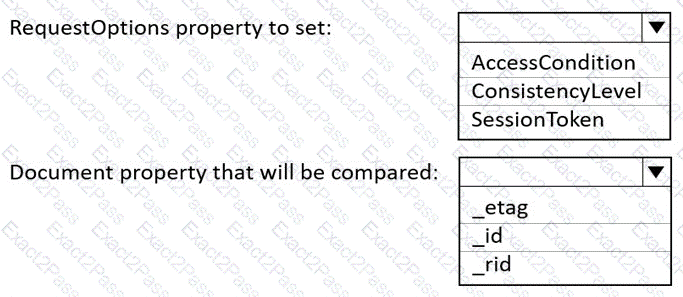
You have an Azure Cosmos DB for NoSQL account.
You plan 10 create a container named container1. The container1 container will store items that include two properties named nm andage
The most commonly executed queries will query container1 for a specific name. The following is a sample of the query.

You need to define an opt-in Indexing policy for container1. The solution must meet the following requirements:
•Minimize the number of request units consumed by the queries.
•Ensure that the _etag property is excluded from indexing.
How should you define the indexing poky? To answer, select the appropriate options in the answer area. NOTE: Each correct selection Is worth one point.
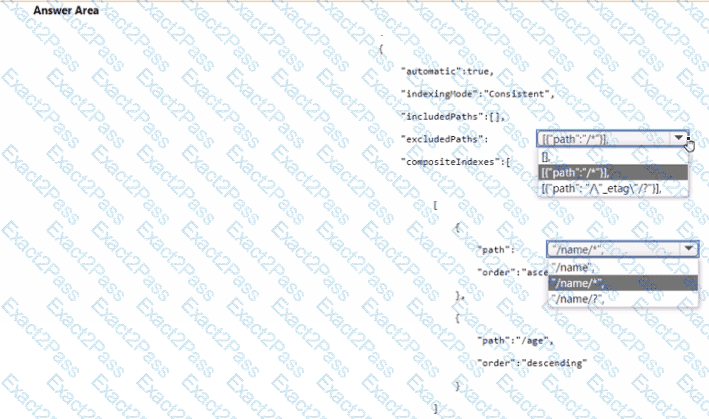
You have the indexing policy shown in the following exhibit.
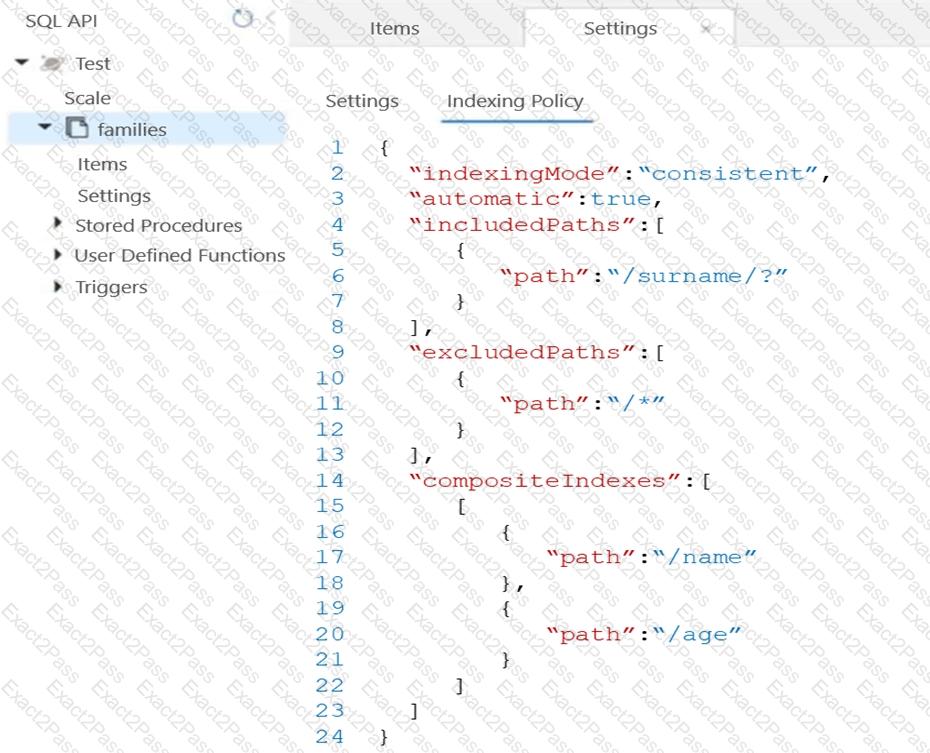
Use the drop-down menus to select the answer choice that answers each question based on the information presented in the graphic.
NOTE: Each correct selection is worth one point.
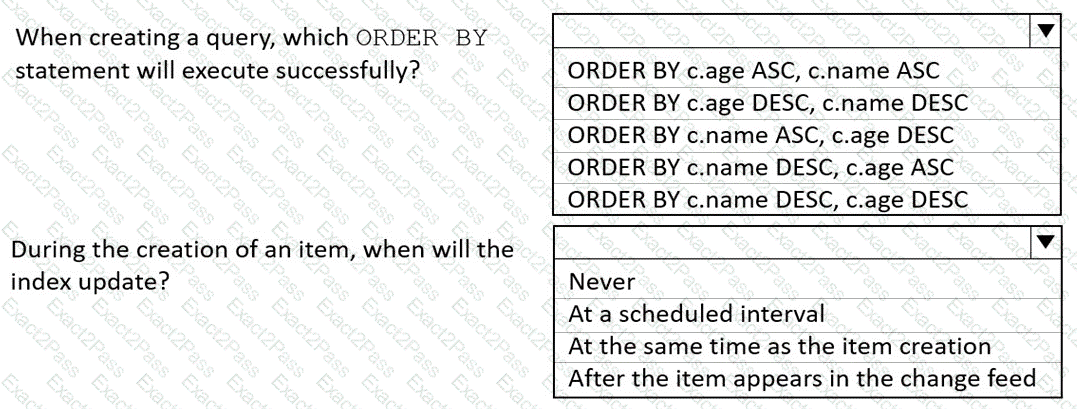
Note: This question is part of a series of questions that present the same scenario. Each question in the series contains a unique solution that might meet the stated goals. Some question sets might have more than one correct solution, while others might not have a correct solution.
After you answer a question in this section, you will NOT be able to return to it. As a result1 these questions will not appear in the review screen.
You have a database in an Azure Cosmos DB for NoSQL account that is configured for multi-region writes.
You need to use the Azure Cosmos OB SDK to implement the conflict resolution policy for a container. The solution must ensure that any conflicts are sent to the conflicts feed.
Solution: You set ConflictResolutionMode to Laswriterwins and you use the default settings for the policy.
Does this meet the goal?
You have an on-premises network.
You have an Azure subscription that contains an Azure Cosmos DB account named account1 and an Azure virtual network named VNet1. VNet1 contains two virtual machines named VM1 and VM2. VNet1 is connected to the on-premises network by using a Site-to-Site (S2S) VPN.
You need to meet the following requirements:
• Block access to the public endpoint of account1.
• Allow only VM1 to access account1.
What should you include in the solution? To answer, select the appropriate options in the answer area.
NOTE: Each correct selection is worth one point.

You have the following Azure Resource Manager (ARM) template.
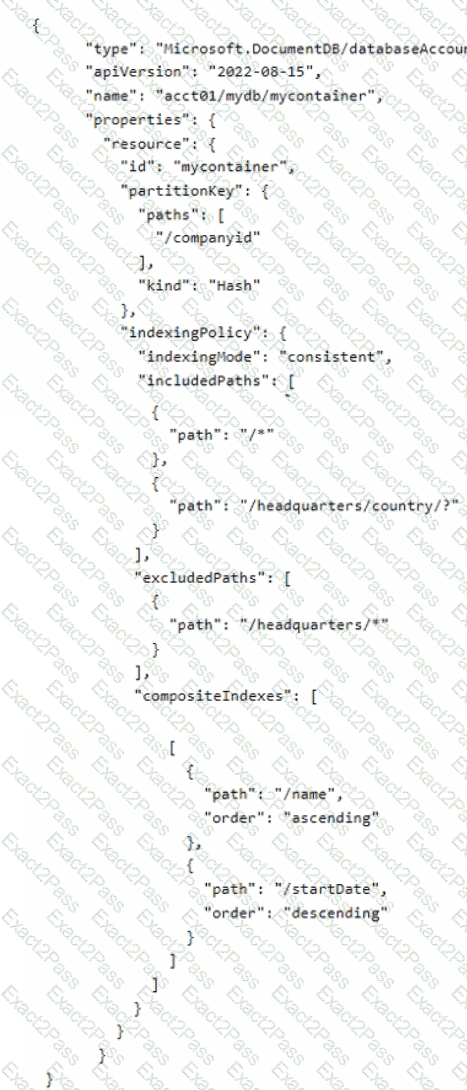
You plan to deploy the template in incremental mode.
For each of the following statements, select Yes if the statement is true. Otherwise, select No.

You plan to create an Azure Cosmos DB Core (SQL) API account that will use customer-managed keys stored in Azure Key Vault.
You need to configure an access policy in Key Vault to allow Azure Cosmos DB access to the keys.
Which three permissions should you enable in the access policy? Each correct answer presents part of the solution.
NOTE: Each correct selection is worth one point.

